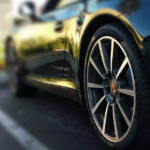
We often forget that tyres are the sole point of contact between your car and the road. Therefore, the condition of tyres is vital to our safety while driving. A well-maintained set of tyres will also indicate that they are in great shape which improves the performance of the vehicle. We have provided guidelines to ensure that your tyres are in good condition.
Tyre replacement
What’s the ideal moment to replace your old tyre with a brand new one? A tyre needs to be replaced prior to the time when the tread depth falls below the tread depth that is recommended (Generally, 1.4mm for wet conditions) check out Ozzy Tyres for more details. You may also see the tread wear indicator on your tyre, which will inform you if the tread is worn out. According to experts, a tyre should not be used for longer than 10 years in any case, regardless of the number of kilometres travelled because tyres get older and this impacts the reliability and increases the chance of failure.
Rotation of the tyre
Since tyres deteriorate with age and also wear out, it is essential to get in the spare tyre and turn the tyres in order to even wear every 10,000km. The first rotation is crucial since it sets the scene for wear on tyres. Rotating the tyres every now and then will ensure that all tyres share the load equally and that no tyre is exposed to excessive or underexposure. It is also crucial to have the alignment checked. One indication that the vehicle requires alignment can be seen when the car starts to pull towards the other side. It is best to get the alignment done prior to when you spot the signs, you can have it done every 15,000km, and also after you change the tires or wheels.
The pressure of the Tyre
It is also necessary to have the pressure of your tyres checked every week. It is vital to maintain the pressure of the tyres at the levels suggested by the manufacturer. A properly inflated tyre reduces the chance of losing control over the vehicle and avoids irregular wear that could arise from overinflation or underinflation.
Tread depth
The tread’s thickness should be about 1.6mm. Replace the tyres in case it’s lower. This is vital for stable stopping, cornering, and high-speed driving.
Drive smooth
The forceful braking process reduces the life span of the tyre, which causes premature damage and wear. It is important to drive at a consistent speed and to avoid frequent brakes. If you speed up and apply brakes frequently, it will lead to skidding off the tyre, which results in the tread on the tyre becoming worn more quickly.
Storage of Tyres
The tyres should be stored in a dry and cool location away from sunlight or heat, as well as ozone sources like hot pipes or electric motors. Make sure the surface is free of grease, fuel or other substances that could cause damage to the rubber. It is also advised to wear gloves to protect yourself when dealing with the tyres.
Alloys and Tyres
If you’re looking to buy alloys for your vehicle it is recommended to measure the original tyre’s circumference. Properly fitted alloys with properly fitted tyres are considered to be more efficient.
Valve care
Valve caps and valve valves are crucial as they protect the tyres against dirt and dust particles. Make sure they are in good order to ensure an airtight seal as well as the correct pressure for tyres.
Take care using the Jack
It is highly recommended to make use of the hydraulic car jack since it is a reliable tool and will ensure the safety of the vehicle. If a hydraulic jack isn’t in use then a standard jack offered by the manufacturer of your car should be used. Check that the base on which the punctured tire is replaced is firm and flat.
Tyre rim
Make sure to wash the rim of your tyre to prevent it from getting covered in dust and dirt. Also, ensure there aren’t obvious bends in the rim. Additionally, the rim valve hole should be straight and smooth.
Research Snipers is currently covering all technology news including Google, Apple, Android, Xiaomi, Huawei, Samsung News, and More. Research Snipers has decade of experience in breaking technology news, covering latest trends in tech news, and recent developments.
View Comments
Thankyou for sharing this amazing tips its really useful information.